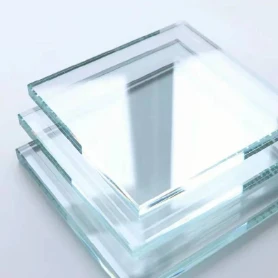

Understanding Mirror Glass Prices Factors and Trends
Mirror glass is a versatile and essential component in various applications, including home decor, automotive, and architecture. The price of mirror glass can vary significantly based on several factors, and understanding these variables is crucial for consumers and businesses alike. This article aims to explore the intricacies of mirror glass pricing, examining factors that influence costs and current market trends.
Types of Mirror Glass
Before delving into pricing, it's essential to understand the different types of mirror glass available. The most common types include
1. Standard Mirror Glass Typically made with a silver or aluminum backing, this is the most widely used form and is found in homes and businesses. 2. Decorative Mirror Glass Often treated with special coatings for artistic effects, decorative mirrors command a higher price due to their unique features and aesthetics.
3. Specialized Mirror Glass This includes one-way mirrors, tempered or safety mirrors, and those designed for specific uses such as bathroom mirrors or rear-view applications in cars. Due to the specialized nature of these products, their costs are generally higher.
Factors Affecting Mirror Glass Prices
1. Material Quality The quality of materials used in the manufacturing process significantly impacts the price. Higher-quality glass produces clearer reflections and is more durable, thus costing more.
2. Production Processes Advanced production techniques, such as low-emissivity (Low-E) coatings or the use of eco-friendly materials, can increase manufacturing costs. Consequently, these factors often translate to higher consumer prices.
3. Size and Thickness As with most glass products, larger and thicker pieces of mirror glass are more expensive due to the amount of material and the complexity of handling and transportation.

4. Customization Custom sizes, shapes, or designs will contribute to increased costs. Personalized mirrors for specific uses or designs that require bespoke arrangements demand a premium.
5. Market Demand Trends in design and consumer preferences can significantly influence pricing. For instance, an increase in home renovation projects may lead to higher demand and, consequently, higher prices.
6. Geographic Location Prices can vary by region due to differences in shipping costs, local demand, and the availability of suppliers. Urban areas may see higher prices compared to rural locations.
Current Trends in Mirror Glass Pricing
The mirror glass market has seen fluctuating prices in recent years, influenced by several economic and social factors. The post-pandemic recovery has led to a surge in home improvement projects, increasing demand for mirror products. This trend has caused some shortages and, in turn, price hikes.
Moreover, sustainability has become a significant consideration for consumers, prompting many to seek eco-friendly products. As manufacturers invest in sustainable practices, such as using recycled materials, the initial production costs may rise, affecting retail prices.
Additionally, global supply chain disruptions have impacted the availability of raw materials used in mirror glass production. This has led to increased prices in some regions, as manufacturers strive to maintain quality and meet demand.
Conclusion
Understanding the factors that influence mirror glass prices can empower consumers to make informed purchasing decisions. Whether you are looking to buy a decorative piece for your home or sourcing materials for a larger project, awareness of the current market trends and price fluctuations will help you navigate the mirror glass landscape effectively. As the market continues to evolve, staying updated on these trends will ensure you get the best value for your investment.